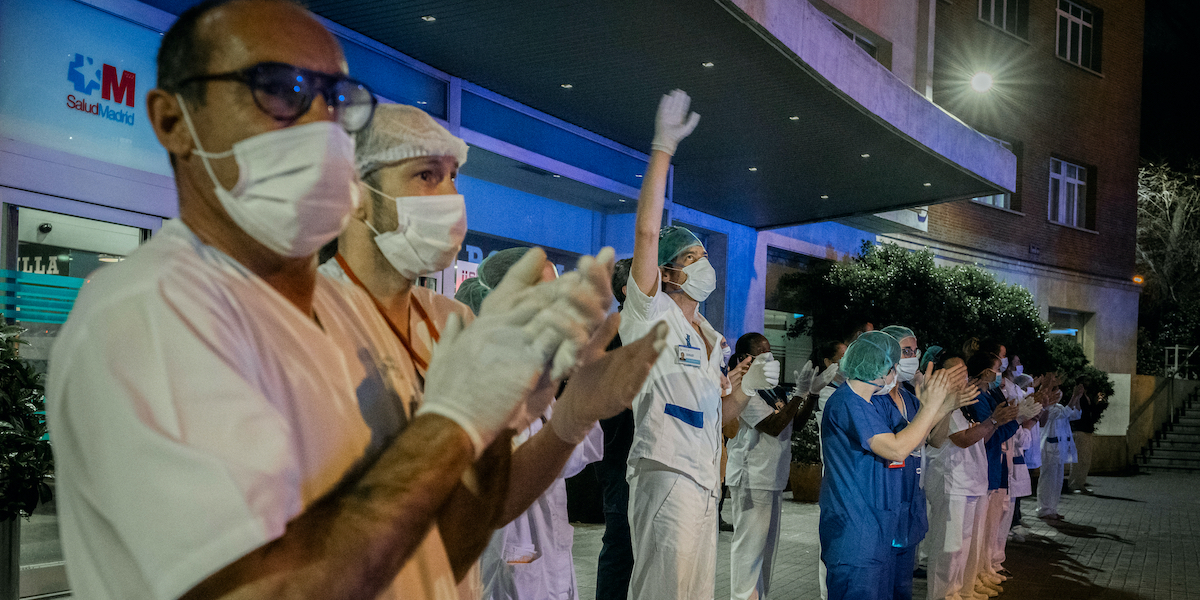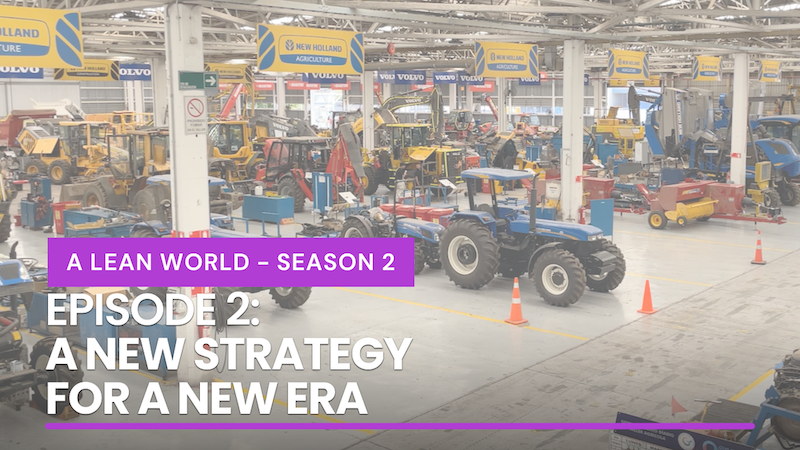
What is hoshin kanri?
ROUNDUP – In the last roundup on lean tools and concepts of the year, our editor collects and curates the best articles on strategy deployment (hoshin kanri).
Words: Roberto Priolo, Managing Editor, Planet Lean
As we approach the end of the year, many of you will already be thinking about the coming 12 months. In fact, you have probably been thinking about them for a while. What will the business need to achieve to stay successful? What are its goals? What problems will need solving if it is to thrive?
Strategizing is a fundamental part of a leader’s job. The question is, is this strategy drawn based on that leadership team’s assumptions and beliefs or is it spelled out looking at real data and problems and with the input of the rest of the organization? Does this strategy outline actionable improvements that have a clear correlation to the achievement of business goals? Do people understand what their contribution to those goals is?
If you are trying to answer these questions, then strategy deployment (hoshin kanri, if you are after the Japanese term) might be the right approach for you to look at.
As always with these roundups, let’s start with a definition.
HOSHIN KANRI DEFINITION
According to the Lean Lexicon, hoshin kanri is “a management process that aligns – both vertically and horizontally – an organization’s functions and activities with its strategic objectives. A specific plan – typically annual – is developed with precise goals, actions, timelines, responsibilities, and measures.”
The Lexicon continues by explaining how hoshin often starts as a top-down process as the lean transformation is initiated. “However, once the major goals are set, it should become a top-down and bottom-up process involving a dialogue between senior managers and project teams about the resources and time both available and needed to achieve the targets. This dialogue often is called catchball (or nemawashi) as ideas are tossed back and forth like a ball.”
One of the primary goals of hoshin kanri is to identify those projects that are necessary but also achievable, those that will engage people from across functions and effect change whose positive effect will be felt throughout the company.
Over time, as the lean transformation progresses and the company becomes more familiar with the process, hoshin “should become much more bottom-top-bottom, with each part of the organization proposing actions to senior management to improve performance.”
According to Flavio Picchi, President of Lean Institute Brazil, “hoshin aligns leadership horizontally and vertically, connecting problem solving and improvement initiatives at different levels of the firm with organizational goals, thus avoiding dispersed efforts.” In this article, he discusses 10 strategic problems that hoshin can help you to solve.
FOCUSING ON CRITICAL BUSINESS PROBLEMS
Another member of the Lean Global Network, Christopher Roser, defines hoshin as “a combination of a prioritized to-do list and PDCA” (read the article here). This point on prioritization is quite important, because picking the battles we want to fight is critical in achieving ongoing success.
This seems to be the experience of a Velux plant in Poland, which has been able to dramatically shorten its list of KPIs using hoshin kanri. “Before we implemented policy deployment, we used to drown in data and KPIs and people were getting really confused. Besides, we only ended up using a few of them. Hoshin simplified our daily meetings system and limited the number of KPIs we track (from 117 to 18 in one instance). It forced us to redefine our goals and, as a result, gave everyone a clear understanding of their responsibilities. In our new structure, goals are cascaded down from top to bottom, and problems are escalated from the bottom to the top.”
Another great example of a successful application of hoshin comes from Itaú Unibanco in Brazil. In this article, Victor Catisse and Robson Gouveia explain how this approach helped the bank prioritize and solve its problems. They also remind us how useful it can be to use an Obeya room to track problem-solving activities and figure out next steps. Check out this video to tour an Obeya room in a cancer treatment center in Brazil with the organization’s CEO and learn how they use the room to drive their hoshin. In another video, we hear from a hotel director in Tenerife.
To understand just how important strategy deployment is in a lean organization, read this piece by Jim Womack. He describes hoshin planning as one of the three key elements of a lean management system – together with A3 thinking and daily management – but also sees problems in the way it is used in most organizations.
Jim writes: “Hoshin plans are developed at the top, with no feedback from lower levels about the resources available or the conflicts between the hoshin plans and the pre-existing budgeting and management performance systems with their KPIs. […] Not surprisingly, strategy deployment initiatives that seem very impressive at first glance – all those visual boards and obeya rooms! – are usually failing to complete and sustain their hoshin.” Jim’s warning is one you should take note of: “Not asking critical questions about the method for deployment and to be realistic about resources in the key cause of hoshin failure.”
One of the things lean thinking does best is making the work easy to perform. If we look at hoshin like that, we can say that what it does is effectively take the work of management (in this case, strategizing and deploying the strategy) and break it down in bits to ensure it is easy to define, track and complete. Hospital Vall d’Hebron, Catalonia’s largest hospital, pioneered the use of hoshin kanri in a healthcare setting. In this article, their former CEO says: “Hostin is where strategic planning and daily operations come together. The KPIs you track with it are used to evaluate the effectiveness of the plans you are deploying and to ensure that weekly, monthly and yearly we are working as we should. Hoshin reflects a fundamental change that took place in the organizational culture. These days, it is organizational objectives that come down from hospital management – not directions. At lower level of the organization, people know exactly what they have to do to meet the targets that will collectively contribute to the achievement of those hospital-wide goals.”
IS HOSHIN DIFFICULT?
In a nutshell, hoshin kanri allows you to focus on what’s truly important to the success of the business and to transform the company’s goals into actionable items that people at different levels can tackle. This, in turn, defines their roles and helps them to see their contribution to the success of the business (in this sense, it is a great tool to foster engagement).
One of the things making it quite challenging is the fact that management typically suffers short-termism, whereas hoshin kanri (much like lean thinking itself) works best when a clear, long-term purpose is defined and communicated to everyone in the organization. As you develop your hoshin, it is advisable you frame your plan for next year (for example) within the context of your long-term mission. True North cannot be reached in the short term. However, if we understand how to fully leverage it, hoshin kanri can represent a powerful tool that helps us to organize our thinking and activities and to identify the steps we need to take to get to our destination.
Take IOV, the cancer treatment center we mentioned before, for instance. They rely on hoshin kanri to fulfil their mission of reducing cancer burden for people – an honorable, lofty goal that cannot be achieved in the short term.
So, is hoshin difficult to use? It depends on the behaviors of management, as Michael Ballé reminds us in this Gemba Coach column. He writes: “If used as a transactional planning technique it can turn on the management team by creating further frustration, demotivation, and disengagement. To work as it should, hoshin kanri requires from management both a very clear vision of the improvement dimension, and a strong practice of gemba walks to see the reality of work situations first-hand and understand people’s strengths and weaknesses well enough to have practical ideas on how to help them reach their own goals even when they’re stuck.”
HOW TO START WITH HOSHIN, AND WHEN?
There is no rulebook on when hoshin kanri can or should be introduced, because every situation is unique and requires a unique approach. However, we can learn from the experience of the Hospital Vall d’Hebron. In their article, Vicenç Martínez Ibañez and Antoni Campos Rubiño tells us: “When it comes to hoshin, the most critical lesson we have learned is that you can’t do it without creating stability in your processes and orienting everyone towards the same goal. If we had explained it at the beginning, we wouldn’t have succeeded. With all things lean, you almost have to wait for people to ask for the next advancement in the journey – when they have improved to a point that they are stuck and need to move to the next level.” These are important ideas to interiorize.
Once you are ready to kick off your hoshin efforts, the next question you’ll ask yourself is, “How?” Should the focus be on process-level problems or organizational-level problems?
In this article, Wiebe Nijdam tries to answer this last question: “The simple answer is that you should start wherever the problems you want to solve are, so long as there is a system for daily accountability in place and the boards are present at every level and communicate with one another across the organization.” Wherever you bring your hoshin, the first thing you will notice is a marked increase in the visibility of problems and improvement opportunities.
Wiebe’s examples are very clear:
- Start at organizational level and you will clearly see what you need to improve in your overall value stream, which in turn will tell what contribution you should expect from different departments.
- Start at process level, and you will learn how individual cells can contribute to the success of that process.
“The work must be translated into individual contributions from each level in the organization or, at process level, from each cell in the production area. This way, gaps will soon become easier to spot, and with them the opportunities for improvement,” writes Wiebe.
Check out this article for great visuals and advice on how hoshin kanri practically works. And here you’ll find the system applied in a real-life setting (in this case, a Ministry in the Netherlands).
Before we say goodbye, I want to share with you one, last piece – this time from our sister publication The Lean Post. In it, Mark Reich provides us with a very powerful metaphor to explain hoshin: “A body where muscles are left to atrophy is weak, not adaptive and competitive. However, muscles need something to connect to, something that connects them to each other. Individual muscles are to be aligned to a skeleton that provides a common purpose and way of thinking. In this way, continuous improvement and hoshin complement each other if practiced correctly. Continuous improvement strengthens the body; hoshin holds it together.”
THE AUTHOR

Read more


FEATURE – How did lean healthcare organizations respond to the most critical stage of the epidemic? We asked three hospitals in Catalonia and Toledo to share their experience.


INTERVIEW – Catherine Chabiron sits down with Marc Onetto, a former executive with GE and Amazon, to discuss Jidoka and its profound effects on the way people work and think.


NOTES FROM THE (VIRTUAL) GEMBA – Throughout the lockdown, this car-selling business has never lost its focus on people development. The author learns how this approach is helping the firm make the most of the crisis.


WEB SERIES – In the second episode of our docuseries on lean in Chile, we learn how, with a clear purpose and strong commitment from leadership, SKC is transforming its processes and mindset and building a competitive advantage.

